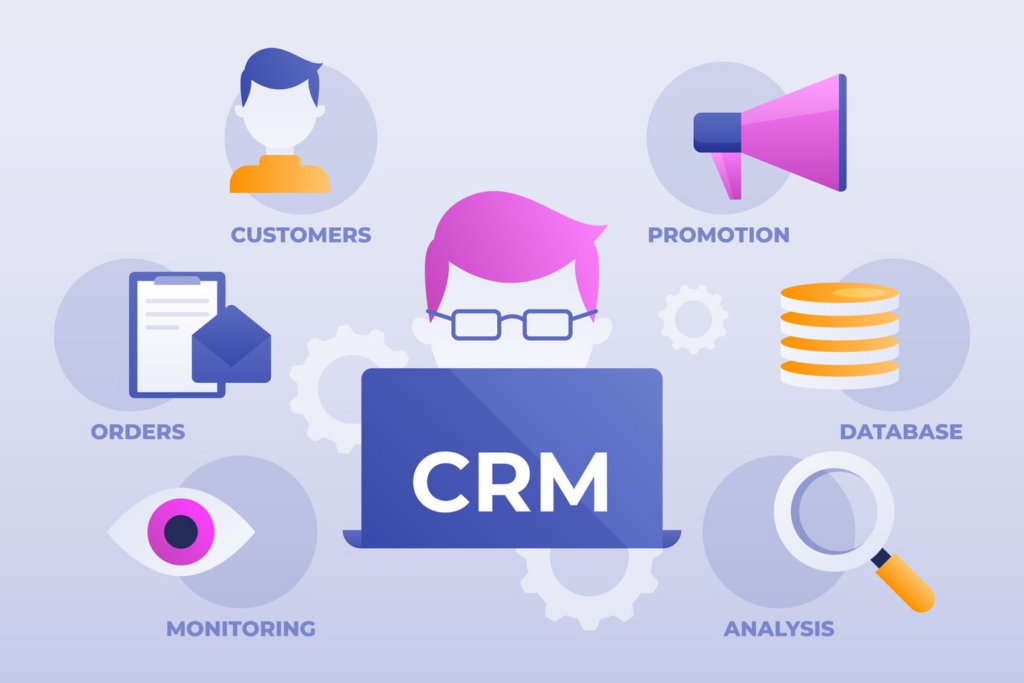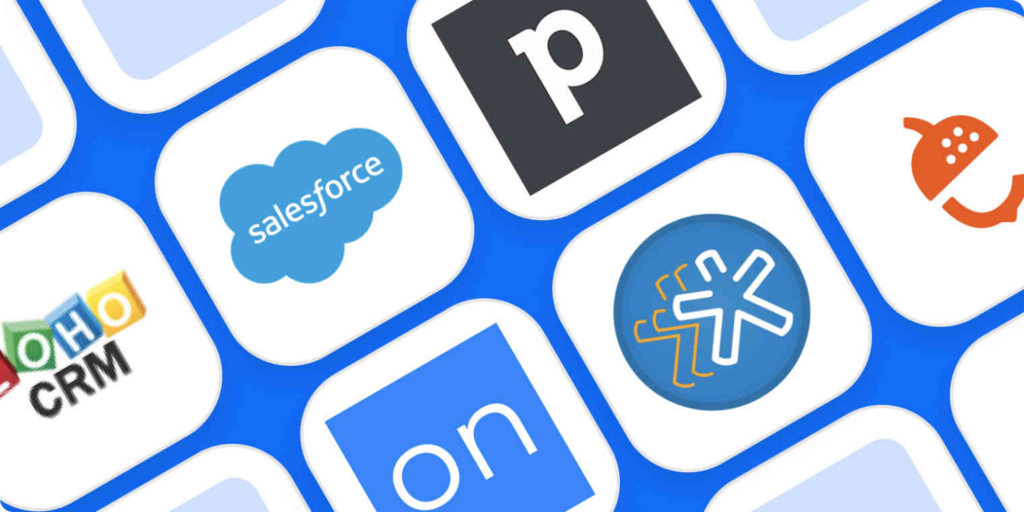An effective customer relationship management (CRM) system is essential for businesses to manage sales pipelines and nurture leads. At the same time, dedicated lead generation tools provide critical capabilities for capturing, scoring, and qualifying new prospects across various channels. Integrating these systems delivers a unified lead-to-customer view that maximizes efficiency and conversions.
In this comprehensive guide, we’ll explore best practices for connecting lead generation and CRM platforms to avoid data silos and enhance results.
Table of Contents
The Case for Integration
Most businesses use a combination of software tools to handle sales and marketing processes. Typically, a CRM application manages current customers and sales pipeline data. Meanwhile, specialty lead generation tools power campaigns, landing pages, chatbots, forms, and other inbound lead capture across websites, ads, emails, events, etc.
Without integrating these systems, sales and marketing teams operate in the dark. Reps lack context on how and when a new lead entered the funnel to qualify and nurture them properly. Marketing can’t segment and target existing CRM contacts for cross-sell campaigns. Metrics get fractured across systems, making optimization impossible.
Carefully connecting lead generation capabilities with an existing CRM eliminates these issues. Everyone gains complete visibility into the lead origin, activities, and deal progress from first touch to close. This streamlines follow-up, provides critical behavioral data to segment contacts, and enables accurate sales and marketing analytics.
For example, a game art studio can generate leads even earlier in the pipeline by involving potential customers. Capturing these interested leads via online creative forums provides game companies with actionable data on fan preferences to drive further lead generation efforts. Carefully logging this lead origin and engagement data in an integrated CRM gives complete visibility into which assets and creative styles resonate most with target audiences.
With Ipaas, this process becomes more efficient, ensuring real-time data synchronization across systems.
However, it’s important to avoid common CRM challenges that may arise during CRM integration and implementation process.
Critical Capabilities for Seamless Integration
To truly unify lead and customer data across marketing automation and CRM systems requires specialized functionality:
Omnichannel Lead Capture
Robust lead gen software makes it easy to create forms, landing pages, and white label chatbots and leverage other tactics to absorb prospects from all digital sources into a single dashboard.
For example, for gym owners, using gym lead management software further streamlines the process by tracking member inquiries, automating follow-ups, and enhancing conversion rates from prospect to member.
Bidirectional Sync
CRM and lead gen systems must connect via APIs to automatically sync matched contacts, timeline activities, documents, and other pertinent data in real-time or near real-time to avoid duplication.
Ensuring proper API Security is critical in this process, as it protects sensitive data from unauthorized access and ensures the secure transmission of information between integrated systems.
Utilizing an API management platform can further streamline this process by providing robust tools for creating, managing, and scaling APIs. This ensures a seamless data flow and enhances system integration capabilities.Delving deeper into the intricacies of CRM and lead gen integration, we uncover a labyrinth of possibilities that extend far beyond mere data synchronization.
The art of crafting a symbiotic relationship between these systems hinges on the finesse of API orchestration – a delicate dance of digital diplomacy, if you will. Imagine a world where your sales funnel breathes and adapts in real-time, fueled by the pulsating rhythm of data flowing through meticulously designed API channels. This isn’t just about avoiding duplicate entries; it’s about unleashing the full potential of your business ecosystem.
Universal Tracking & Scoring
Marketing automation provides hidden site tracking and rich behavioral scoring algorithms to qualify anonymous website visitors over time once matched to existing CRM leads and contacts. Private equity CRM software makes this even more effective by streamlining communication, tracking investor activity, and managing deal flow in one place.
Intelligent Lead Routing
When a lead achieves a conversion milestone, programmatic hand-offs based on business rules ensure they get routed to the right sales rep or nurturing track for further development.
Holistic Analytics
One unified reporting interface should tie together lead generation sources, pipeline performance, revenue impact, and customer retention data for a true end-to-end view of marketing and sales efforts.
When you get serious about tracking your pipeline performance, you start seeing the whole story of how deals actually move from first contact to closed win – or where they get stuck along the way. It’s like having X-ray vision into your sales process, showing you exactly where leads are losing steam or which reps are crushing it with their follow-up game.
The real magic happens when you can spot those patterns early on and make tweaks before a slow month turns into a slow quarter. Smart teams are using these insights to fine-tune their approach, coach their reps more effectively, and basically turn their pipeline into a well-oiled machine.
Custom CRM Objects & Fields
IT teams need to be able to customize CRM records and objects to capture all lead gen data points natively during synchronization instead of using generic containers.
An example of such a tool is Corcava, which provides advanced customization options, enhancing the efficiency of your CRM system. Diving deeper into CRM customization, it’s not just about tweaking fields – it’s about sculpting your digital ecosystem to fit your business like a glove. Picture this: your sales team, armed with laser-focused data, closing deals left and right. That’s the power of a finely-tuned CRM. But here’s the kicker – it’s not just about capturing data; it’s about making that data sing.
Top Software Solutions
Many purpose-built B2B marketing automation and CRM platforms meet the above requirements for integration out of the box:
- HubSpot – An all-in-one inbound marketing, sales, and service solution, HubSpot combines CRM and robust lead generation tools, including chatbots, forms, email marketing, landing pages, and analytics. Everything stays connected with no complex integration required. For seamless LinkedIn prospecting, you can leverage Hublead, a Chrome extension that syncs LinkedIn contacts and messages directly into HubSpot, eliminating manual data entry and streamlining outreach efforts.;
- Pardot – Part of the Salesforce ecosystem, Pardot offers specialized B2B marketing automation for lead nurturing, segmentation, scoring, and routing into nearly any CRM platform. 200+ pre-built connectors available;
- Marketo – Recently acquired by Adobe, Marketo excels at multi-channel campaign execution and analytics paired with behavioral lead scoring algorithms and seamless integration with popular CRMs.
CRM Considerations
When researching integration, start with your existing CRM system, which already manages hard-won customer data. Explore available connectivity options for importing enriched, sales-ready leads from external sources.
- Salesforce – The market-leading enterprise CRM, Salesforce offers powerful APIs and pre-built connectors called Snaps to integrate marketing automation, chatbots, forms, and custom lead data. Experts of dgt27, a leading Salesforce consulting in NYC, recommend conducting a thorough integration assessment to identify all your data sources and desired functionalities. This will ensure you select a CRM that seamlessly connects with your existing tech stack and scales alongside your growing needs. Building on the wisdom shared by dgt27’s Salesforce consulting experts in New York City, it’s crucial to recognize that a comprehensive integration assessment serves as the cornerstone of successful CRM implementation. Implementing the best project management software can further enhance the efficiency of your CRM integration process, ensuring smooth collaboration across teams.;
- Microsoft Dynamics 365 – Part of Microsoft’s Power Platform, Dynamics 365 Customer Engagement handles enterprise-scale CRM, including templates to auto-capture web and social lead data into relevant pipeline fields;
- Insightly – Boasting “CRM made simple,” this nimble SaaS targets small businesses by providing an open API to connect lead gen tools alongside sales and project management functionality;
- Zoho CRM – Touted as an affordable yet capable CRM, Zoho offers an open API along with 350+ pre-built integrations and custom modules to capture and manage lead data from anywhere.
At the heart of modern business intelligence, Microsoft Dynamics 365 offers companies a game-changing approach to customer relationship management. Companies tired of juggling multiple systems will appreciate how this platform cuts through the complexity, giving sales teams a real-world tool that actually works.
For those leveraging Salesforce platforms, tools like Agentforce further extend CRM capabilities by optimizing agent workflows and aligning operational efficiency with customer engagement.
With Dynamics 365, businesses can quickly turn leads into opportunities, thanks to smart features that feel less like software and more like a strategic partner. The platform’s ability to connect seamlessly with tools most teams already use – like Outlook and Excel – means less training and more doing, making it a smart choice for organizations looking to work smarter, not harder.
Experienced salesforce negotiation advisors bring invaluable insider knowledge to the table, often saving companies 20-30% on their CRM investments through strategic contract positioning that typical procurement teams simply can’t match.
These specialists understand the nuanced difference between list prices and actual deal thresholds, enabling organizations to secure favorable terms that extend far beyond mere subscription costs to include crucial implementation services and premium support packages. The timing of engagement with these advisors proves critical, with the greatest leverage occurring 3-6 months before renewal deadlines when Salesforce’s quarterly pressures create natural negotiation windows that savvy organizations can exploit.
BIGContacts CRM – An intuitive contact management system created to simplify your sales procedure. Acquire potential customers, oversee client engagements, and enhance conversions using its integrated email promotion features and sales pipeline monitoring. Perfect for small enterprises in search of a cost-effective, comprehensive CRM resolution. If you predominantly use Gmail, exploring the best CRM for Gmail can further streamline your email outreach and lead generation process.
However, it is very important to remember that a CRM system is a very clear and coherent mechanism. And for this mechanism to work smoothly, it needs to be properly maintained. To do this, you need to install special programs and check the database for online failures and viruses. Quality work CRM system can increase the attraction of new and potential customers.
Prioritizing flexibility and connectivity in a core CRM streamlines augmenting it with lead generation strategies and capabilities down the line.
Implementation Guide
Once aligned on complementary lead management and CRM platforms, IT and business teams need to map requirements and configure the integration across these areas:
Choose Primary System
Decide whether the CRM or lead generation tool will be the primary repository for contact data, which gets ported to secondary systems.
Match Fields & Properties
Identify corresponding lead/contact fields across platforms, ensuring all Enrich contact records are in the CRM with additional data captured in lead gen forms and progressive profiling.
Configure Workflows
Automate flows for scoring/segmenting leads then assign to sales reps based on behaviors and readiness signals detected in the lead generation tool.
Enable Real-Time Sync
Use native connectors, APIs, or an integration platform to enable instant synchronization as lead data changes instead of daily or batched updates.
Clean Existing Data
Scrub existing CRM records for duplication and fill in missing fields to ensure accuracy when cross-checking against inbound leads.
Test End-to-End
Validate lead capture flows, routing rules, field mapping, and syncing to meet requirements through extensive testing before rollout.
Conclusion
While connecting platforms takes concentrated effort, the work pays compounding dividends over time through more efficient sales processes, higher win rates, and greatly enhanced analytics. Remember, revenue is generated from leads. An integrated tech stack that delivers a 360-degree lead-to-customer view holds the keys to maximizing growth and productivity goals. Reach out if we can help architect your marketing automation to CRM integration!

